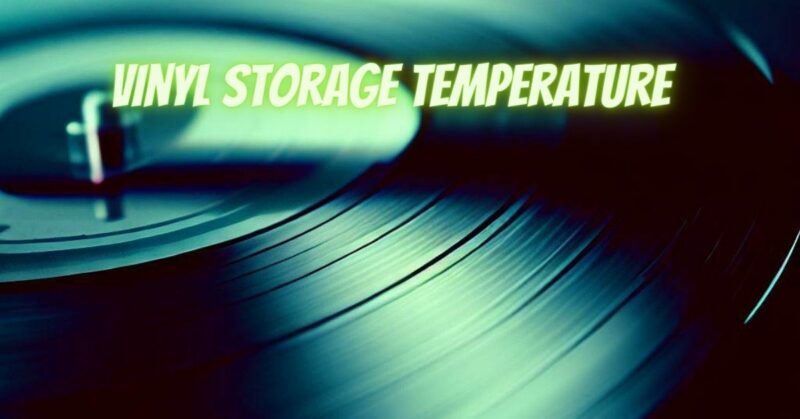Vinyl records are more than just music carriers; they’re portals to the past, vessels of nostalgia, and purveyors of analog warmth. To ensure these sonic treasures stand the test of time, proper vinyl storage is essential. Among the factors influencing vinyl preservation, temperature plays a pivotal role. In this article, we’ll explore the significance of vinyl storage temperature, its impact on record longevity, and best practices for maintaining an optimal environment for your cherished vinyl collection.
Understanding the Role of Temperature:
Temperature is a critical factor in vinyl storage, affecting both the physical and sonic integrity of your records. Extremes in temperature can lead to warping, vinyl degradation, and compromised sound quality.
Ideal Vinyl Storage Temperature:
The ideal storage temperature for vinyl records falls within a range of approximately 50 to 70 degrees Fahrenheit (10 to 21 degrees Celsius). This moderate temperature range helps prevent warping and ensures vinyl longevity.
Impact on Vinyl Warping:
- Heat-Related Warping: High temperatures can cause vinyl records to warp or become misshapen. Records left in direct sunlight or stored in a hot environment are particularly susceptible to heat-related warping.
- Cold-Related Warping: Cold temperatures can also contribute to warping, especially if the records are exposed to rapid temperature fluctuations. Vinyl contracts in cold conditions, potentially leading to permanent deformation.
Vinyl Degradation and Sound Quality:
- Heat-Induced Damage: Prolonged exposure to high temperatures can lead to vinyl degradation, affecting the physical structure of the record and potentially causing surface noise and reduced sound quality.
- Temperature Fluctuations: Rapid changes in temperature can cause vinyl records to expand and contract, leading to stress on the vinyl and an increased likelihood of groove damage.
Best Practices for Vinyl Storage:
- Stable Environment: Store your vinyl records in a stable environment with consistent temperature levels. Avoid areas prone to temperature extremes, such as attics, basements, or spaces exposed to direct sunlight.
- Avoid Direct Sunlight: Sunlight can raise the temperature of a room and directly impact records. Store records away from windows or use UV-blocking curtains if necessary.
- Use Climate Control: If you’re a serious collector, consider using a climate-controlled storage solution, such as a dedicated vinyl record storage unit or a climate-controlled room in your home.
- Proper Shelving: Store records vertically on proper record shelving units. This prevents excessive weight on the records and promotes even weight distribution.
- Record Sleeves: Place records in anti-static inner sleeves and outer protective sleeves to shield them from dust, dirt, and temperature changes.
Vinyl storage temperature plays a crucial role in preserving the beauty and longevity of your cherished vinyl collection. By maintaining a moderate, consistent temperature range and adhering to proper storage practices, you can ensure that your vinyl records continue to spin out the melodic memories of the past for generations to come. Just as each note contributes to a symphony, the temperature in which you store your records contributes to a harmonious preservation of your musical treasures.


